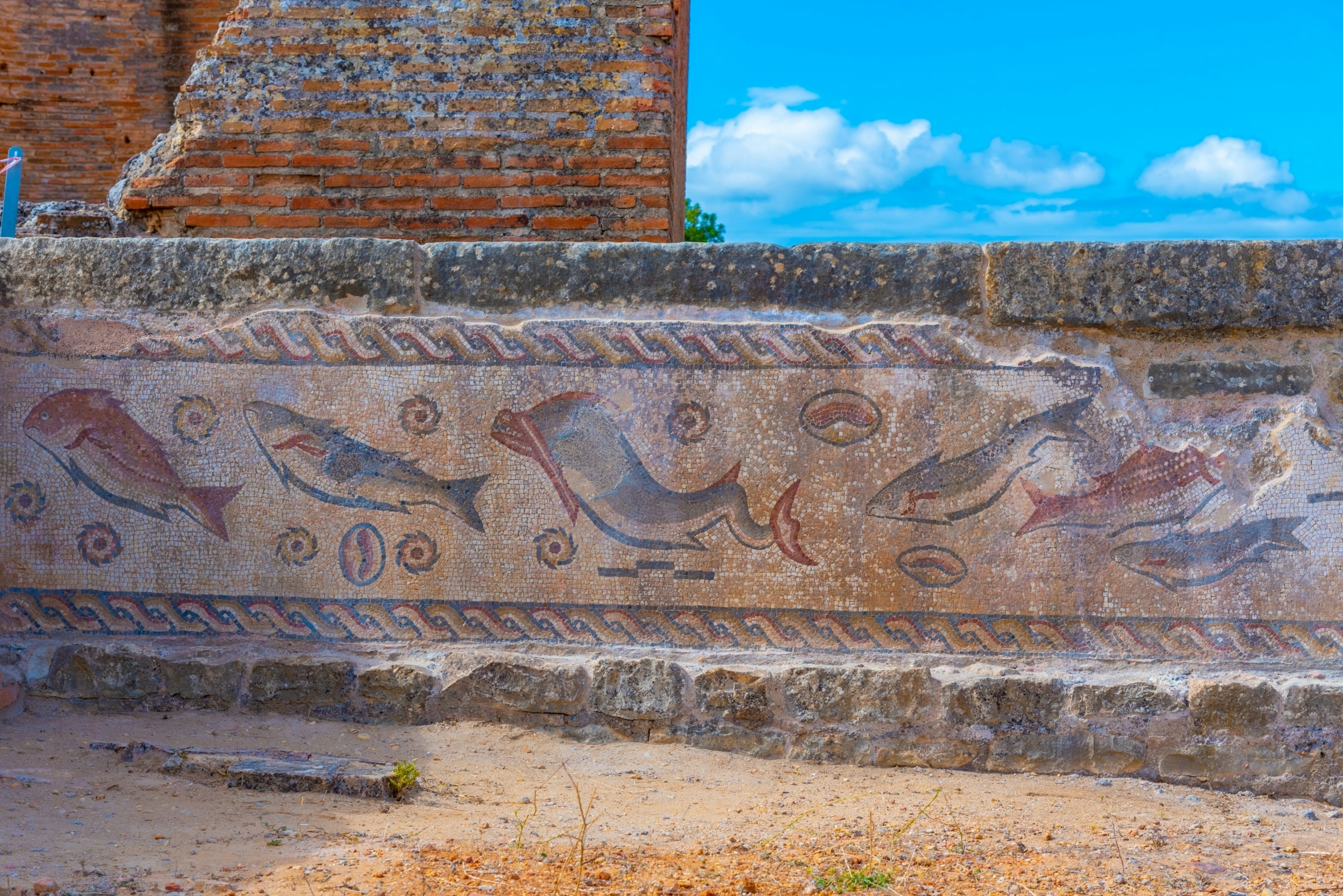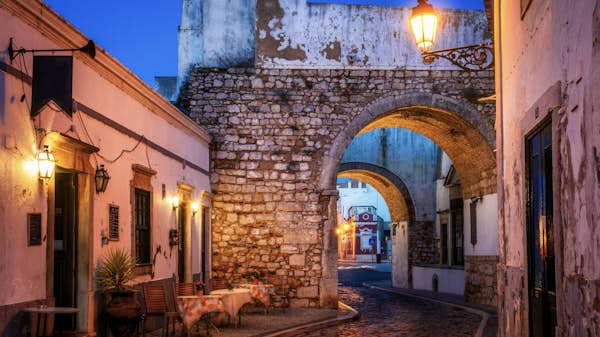Somehow, even as the Algarve took off as one of Europe’s great getaway spots in recent years, Faro, the region’s principal city, seemed to fly under the radar.
Yet that’s all changed now.
Southern Portugal’s regional capital has slowly cemented its city-break credentials. And today, this exciting city is rightly considered one of the country’s best year-round destinations.
Since the city lacks beaches and accompanying resort development on its doorstep, Faro’s Cidade Velha (Old Town) remains wonderfully Algarvian: lived-in, laid-back and lacking the tourist throngs elsewhere along the coast. With its whitewashed streets, Roman ruins, urban vineyards, sandbar-like islands and unfussy yet excellent restaurants, Faro justly deserves a visit on its own merits – or can serve as an ideal base for Algarve exploring.
Here’s how to plan the perfect first visit.

When should I go to Faro?
In many of the Algarve’s tourist-centric towns, the off season means closed businesses and waters more suited to wetsuits. Yet Faro is inviting year-round. Museums, restaurants and events take place throughout winter, and accommodation deals are plentiful. It’s also one of Europe’s warmest winter destinations, with daytime temperatures often reaching 16°C (61°F).
July to September delivers long, sunny days; numerous festivals, including the seafood-focused Festa da Ria Formosa and traditional FolkFaro; and lifeguard-manned beaches – all reflected in elevated accommodation prices. Thankfully, Faro rarely feels crowded – and unlike Spain’s southern cities, which sizzle in summer, Portugal’s Atlantic breeze keeps temperatures to a delightful 29°C (84°F).
My insider tip? Come in April, May or October. These months are the best time to enjoy the Algarve’s reliable weather, restaurants without reservations and island ferries without a wait.
How much time should I spend in Faro?
Faro is the Algarve’s most populous city – yet in the compact Cidade Velha, most attractions are only a few minutes’ walk away. If your Algarve itinerary is tight on time, you could tour the city’s highlights, including the historic walled village, cathedral and a couple of museums, in one efficient (if slightly rushed) day. Just avoid Sundays and Mondays, when some attractions close.
Yet life in southern Portugal is best lived slowly. Plan to stay for two or three nights: to enjoy a full day relaxing on the silky sands of the idyllic barrier islands, visit the nearby Roman ruins and take a dolphin-spotting boat trip.
Faro also makes a decent base to explore the Algarve’s best spots. Spend a week here, and you’ll have easy access to the nearby fishing town of Olhão; pretty, traditional Tavira; and the creative workshops of Loulé, where you can learn to make azulejo, Portugal’s signature, hand-painted ceramic tiles.

Is it easy to get in and around Faro?
Faro and the Algarve’s main gateway is Faro International Airport (FAO), predominantly served by budget European airlines, seasonal transatlantic flights from Toronto and (starting in May 2025) a new route to New York. Affordable public buses link the airport with Baixa (downtown) in 20 minutes. For more flight choices, consider taking the train from Lisbon, or a bus from Seville to Faro; direct connections take around three hours.
Faro’s historic center is largely pedestrianized and ideal for strolling – making renting a car unnecessary (unless you’re planning a road trip). To reach the beach, choose between Próximo’s city bus network or the public ferry (slightly cheaper and more scenic), which departs from the pier fronting the Vila Adentro. Vamus buses are usually best for nearby day trips; take the train toward Olhão or when heading further afield.
Top things to do in Faro

Explore the Vila Adentro’s architectural treasures
Flanked by muralhas (walls) first built by the Romans and later reinforced by the Moors – the North Africans who ruled southern Spain and Portugal between the 8th and 15th centuries CE – Faro’s Vila Adentro (Inside Village) is the city’s oldest and most handsome neighborhood. After you step through the neoclassical Arco da Vila entranceway – built after the devastating 1755 earthquake – and you’ll find a compact labyrinth of cobbled, whitewashed streets; citrus-scented squares; and much of Faro’s finest architecture.
Be sure to visit the Sé, Faro’s 15th-century centerpiece cathedral, which boasts a gilded interior, panoramas from its bell tower and an eerie bone chapel (there’s a much larger one in Igreja de Nossa Senhora do Carmo). Next, take a peek inside the Paço Episcopal, awash with azulejos, before discovering the city’s prehistoric and Roman history in the Museu Municipal, housed in a former convent, where the vivid mosaic portrait of the god Oceanus steals the show.

Hop on a boat for idyllic islands, seafood and whale sightings
You could take the bus to Praia de Faro, sure – but a boat trip to one of the dreamy barrier islands of the Parque Natural da Ria Formosa, a vast natural park of wetlands, lagoons and flamingo-frequented salt pans, is significantly more scenic. The closest is Ilha da Barreta, nicknamed Ilha Deserta since there’s nothing there other than Estaminé, a solar-powered restaurant that serves up lunchtime fish feasts.
For even fresher seafood, join Artur’s Watersports for a clam-picking and oyster-harvesting trip aboard a traditional fishing boat to uninhabited Ilha da Culatra. Or venture further into the deep blue, where playful pods of dolphins are spotted year-round and migratory whales pass through in March and April (I got lucky with an orca sighting recently). With marine biologist Alfredo Rodrigues as a guide, Ocean Vibes offers daily trips from Faro marina.
Taste wines among the vineyards
The Algarve’s wine scene is on the up and up, upstart winemakers – especially around Silves, 45 minutes west of Faro – are fast establishing their names. Yet there’s no need to travel so far: Vinhas de Nexe, a short taxi ride from downtown Faro, opened in 2022, returning urban vines to the regional capital.
On a 90-minute tour and tasting, owner Mónica will guide you through the vines, varietals and a tapas-paired tasting of local grapes, including the prized touriga nacional. (Tours are only available on weekdays.) For a more intimate introduction to Portugal’s vinhos, pop by Epicur, a chic wine bar with a hidden, speakeasy-style supper club, for in-the-know recommendations from Jorge and Rodrigo.

Take a detour to Estoi’s Roman ruins and grand gardens
Just 6 miles north of Faro, the traditional and relatively undeveloped village of Estoi is home to two top attractions, easily combined into an afternoon visit. The Roman ruins of Milreu were the region’s original luxury villa, and the well-preserved fish mosaics and the remains of a water deity temple are still visible today at the open-air excavation site.
Nearby, the 18th-century Palácio de Estoi is even more stately, with well-manicured gardens and neo-Moorish touches embellishing the former nobleman’s palace. You’ll need a ticket to roam the palace’s interior – it’s now a luxury pousada (hotel) – but the lower gardens can be accessed for free from near the church.
Soak in melancholic fado in majestic settings
Fado, Portugal’s signature music genre of evocative lyrics and haunting guitar, first took shape in Lisbon’s working-class neighborhoods. Yet catching a live performance is one of Portugal’s top experiences, wherever you find yourself in the country. In Faro, you’re particularly spoiled for memorable concert backdrops. Pick from Fado na Igreja in the 16th-century Igreja da Misericórdia, recitals in the Museu Municipal’s cloisters or a dinner-accompanied evening at O Castelo atop the Vila Adentro’s sturdy walls.

My favorite thing to do in Faro
Eat, drink – and dance. Although I live an hour west of Faro now, I’ll often head into the city for a night out as the culinary and bar scene likely the Algarve’s best. What’s more, wandering around the illuminated walls and admiring the calçada portuguesa (patterned pavements) at night is magical.
If you were my guest, our evening would start with sunset jazz and a cocktail at LAB Terrace, a low-slung rooftop bar with front-row lagoon views. Then, we’d share a few petiscos (small plates, similar to Spanish tapas) at A Venda, a wholesome, knickknack-decorated spot with delicious vegetarian options.
For dinner proper, Faro’s answer is always seafood. If you were craving a cataplana de marisco (seafood stew steamed in a typical clam-like cooking pot), I’d steer you towards Cantinho – though low-key O Chalavar, where you pick your fish from the counter and watch it being grilled, usually gets my vote. Post-dinner, we’d drop in to Varandas Bar for a perfectly crafted cocktail, followed by dancing under the stars at Associação Recreativa e Cultural de Músicos. Occupying the courtyard of a dilapidated beer factory where the Moorish Castle once stood, this venue regularly hosts top-notch live bands until the early hours.
How much money do I need for Faro?
Faro’s prices are fair, which reflects that it remains a city predominantly for residents rather than visitors. If you stick to local restaurants and cafes, visit municipally run museums, plan free activities and access the beach by bus or ferry, you can enjoy a budget city break. Even if you splurge on upscale dinners, wine tastings, boat trips and a boutique hotel, you’ll still get great value compared to similar Southern European destinations. Keep in mind that accommodation prices can more than triple in July and August.
Credit cards are widely accepted these days, yet as in most of the Algarve, you’ll need cash for some local restaurants, bars, museums, ferries and Vamus buses. (Próximo city buses do accept contactless payments.) A year-round city tax was introduced in 2024 (€2 per person per night from March to October, €1 from November to February), and smaller guest houses usually request this to be paid in cash upon arrival.
-
Shared hostel room: €15–30 (US$15.70–31.50)
-
Basic room for two: €30–60 (US$31.50–63)
-
Self-catering apartment (including Airbnb): from €55 (US$58)
-
Bus ticket to beach or airport: €2.70 (US$2.70)
-
Ferry ticket to the islands: €2.30–5 (US$2.30–5.25)
-
Boat tour or dolphin watching trip: €40–60 (US$42–63)
-
Espresso: from €0.85 (US$0.90)
-
A glass of wine or large beer: €2.50–5 (US$2.65–5.25)
-
Pastel de nata: €1.50 (US$1.60)
-
Lunchtime prato do dia (dish of the day): €8–12 (US$8.40–12.60)
-
Cataplana de marisco (seafood stew) for two: €45 (US$47.50)
-
Vineyard wine tasting: from €28 (US$29.30)
-
Tickets to museums and other attractions: €2–5 (US$2.10–5.25)

Is Faro a city or a region?
Both. Faro is the name of the Algarve’s capital city and the official title (Faro District) of the Algarve. The Algarve’s name derives from the Arabic spoken by the Moors, who called it Al-Gharb (meaning “the west”).
Should I purchase a transport pass in Faro?
If you plan on taking multiple day trips, consider a regional travel pass; single tickets can be cheaper for the odd trip. Rail passes (two or three days) are best for reaching larger towns on the southern coast, while Vamus’ three or seven-day bus passes afford better access to the whole region and inland villages.
Is Faro family-friendly?
Faro is an excellent destination with kids. Restaurants welcome youngsters, dolphin-watching boat trips delight and the lagoon-side waters of the Ria Formosa provide calmer and warmer beach paddling. The playground at Jardim da Alameda João de Deus – a whimsical, leafy park with free-roaming peacocks – is a dream for little ones.
Should I tip in Faro?
Tipping in Faro isn’t mandatory; locals usually leave a few euro coins on the table in restaurants, or round up in cafes. Yet tipping 5–10% for good service in restaurants is always appreciated, especially as tourism has significantly increased the local cost of living in recent years.

